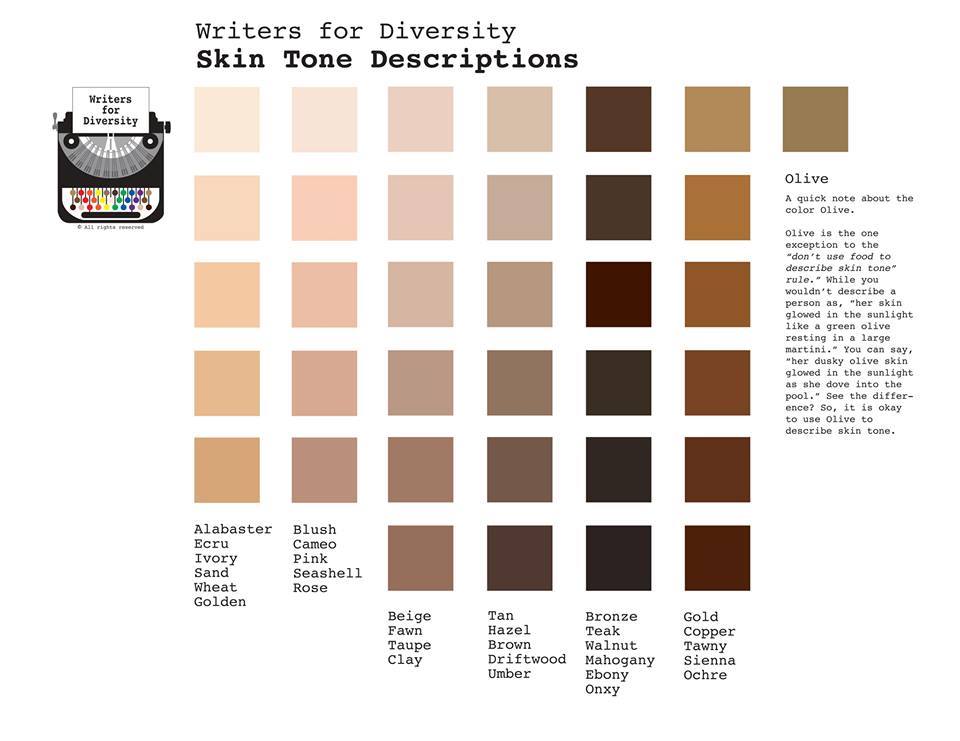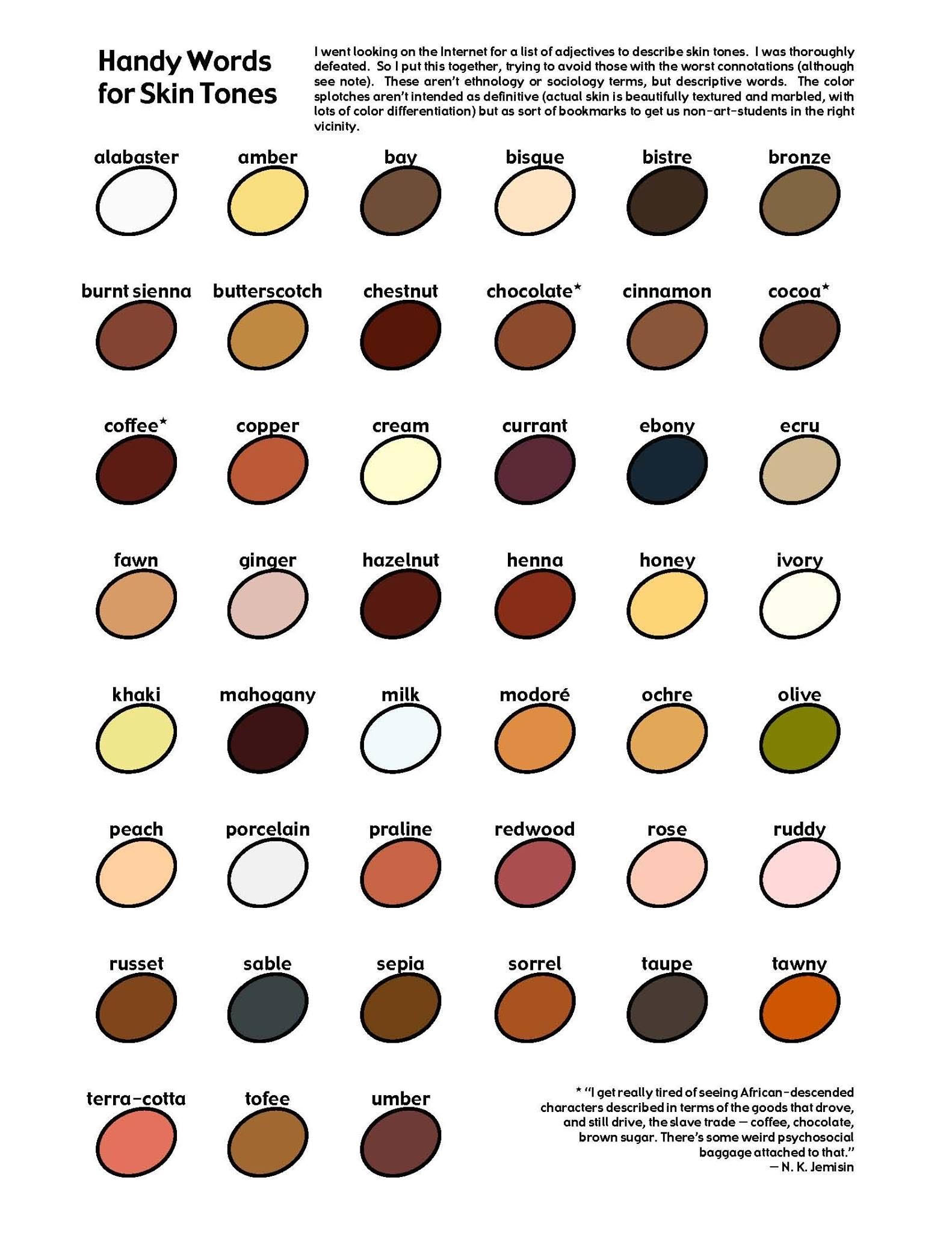Okay, so I was working on this story, and I got stuck describing my characters. You know, like, really making them come alive. And skin tone kept tripping me up. It’s surprisingly hard to describe someone’s skin in a way that feels natural and, you know, not weird.

I started by just brainstorming, writing down every word I could think of that related to skin color. I made a huge list, I used:
- Basic colors: Brown, Black, White, etc. But those are boring, right?
- Food words: Like, “chocolate,” “caramel,” “honey.” But that can get kinda cliché, and also, not everyone relates to food the same way.
- Nature words: “Ebony,” “ivory,” “mahogany.” A little better, but still felt…off.
I was getting nowhere fast.
Then, I started to observe to people, just taking notes. I paid attention to how light hits skin, and the different undertones. Like, does the person have warm, golden tones? Or cooler, reddish tones? That made a HUGE difference.
I also realized that comparing skin tone to real-world objects can work if it’s done right. It’s all about being specific and evocative. Don’t just say “coffee-colored.” Say “the color of strong, black coffee, just before the cream swirls in.” See the difference?
My “Aha!” Moment
The big breakthrough came when I realized I needed to think about more than just the color itself. I started to consider:

- Texture: Is the skin smooth, rough, weathered?
- Sheen: Is it matte, glowing, dewy?
- Variations: Nobody’s skin is perfectly uniform. Are there freckles, blemishes, areas of lighter or darker pigmentation?
For example, instead of “She had brown skin,” I could say, “Her skin was the rich, warm brown of aged leather, with a scattering of freckles across her nose.” Or, “His skin was a deep, matte ebony, smooth and unblemished.”
It’s all about finding those perfect words that capture the feeling of the skin, not just the basic color. And it takes practice! I’m still learning, but I’m definitely getting better at painting vivid pictures with my words.
